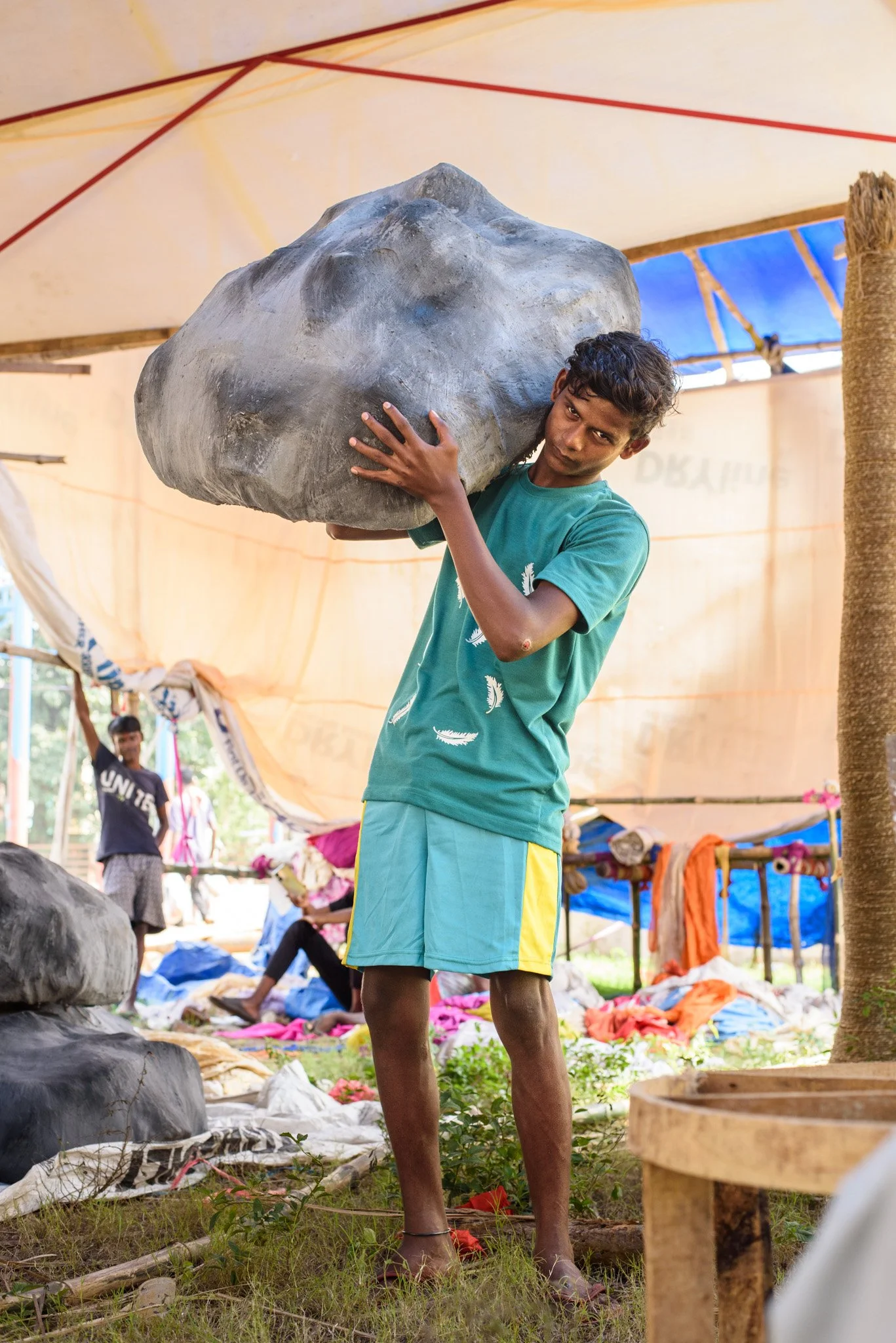The Pandal Workers
Durga Puja, the most important religious festival for the Bengali Hindus is celebrated every autumn in nearly every neighbourhood in the state. Makeshift pavilions called pandals are erected where clay idols of the goddess are worshipped for four days. In recent decades, these structures have evolved into theatres of unbridled imagination, becoming vibrant public performances of art, with organisers competing with one another on grandeur, innovative themes, and socially relevant messages, as massive crowds queue daily to immerse themselves in the spectacle. This vibrant festival is also an economic driver; a 2019 report estimated its “economic worth” at approximately INR 320 billion. Durga Puja in Kolkata was officially inscribed on the UNESCO Representative List of the Intangible Cultural Heritage of Humanity in December 2021.
This project shifts focus from the dazzle to the informal workers without whom these spectacles wouldn't exist, but for whom this is an economic lifeline. We don’t know them—they aren’t our neighbours; they don’t belong to our clubs or social circles. Yet, in the weeks leading up to the festival, they arrive from villages and city outskirts, camp on site, labouring day and night to build the pandals around which we revel. We see them from a distance—barely discernible, their identities lost in scale. As the hours draw near, they quietly recede into the shadows, consumed by the marvels they helped create. By the time the celebrations begin, they’ve vanished entirely from view.


















